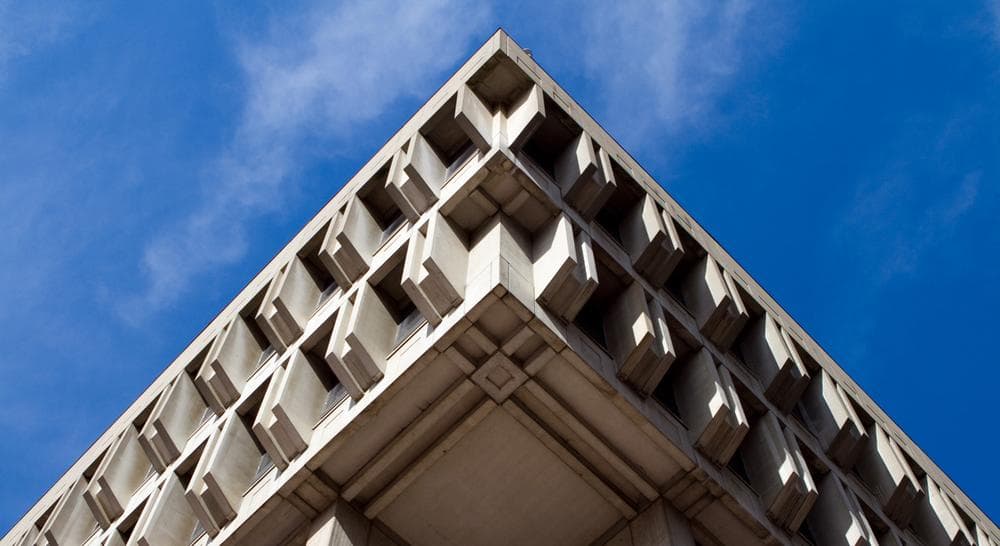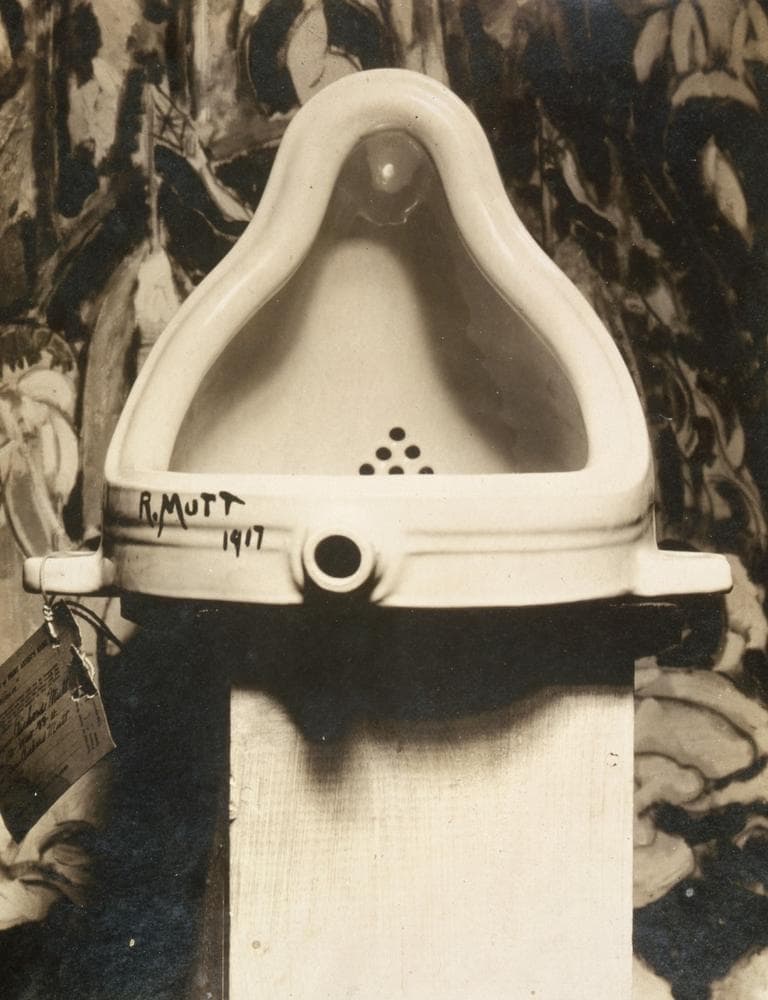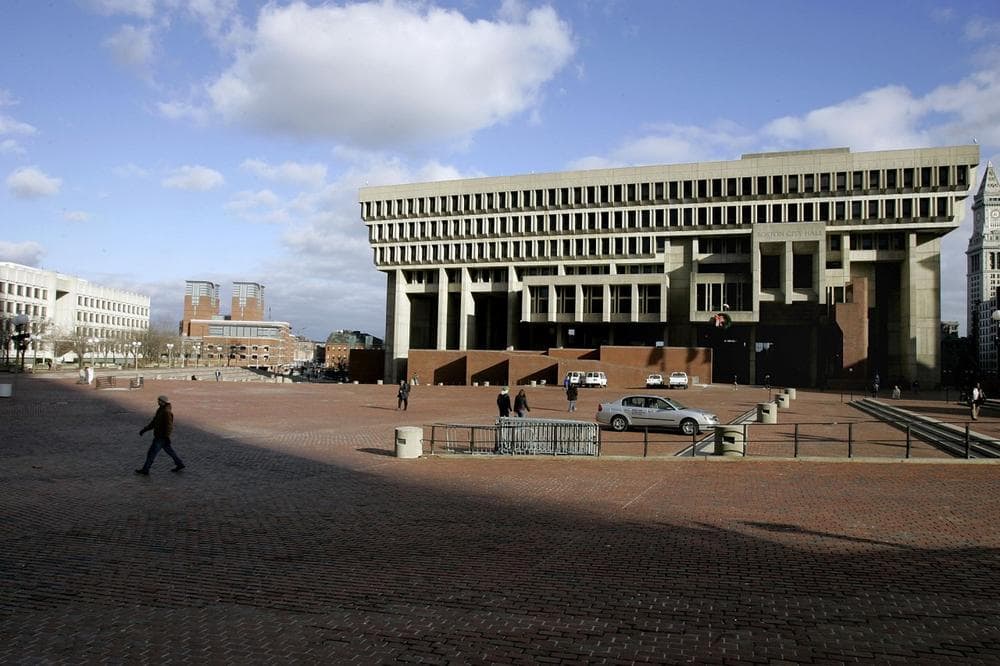Advertisement
Boston City Hall: A Riposte

Boston is home to one of the most significant pieces of municipal architecture in the nation, yet it always seems to be on the chopping block.
The building in question is, of course, City Hall. “The hulking brutalist concrete structure is beloved by a small group of modern architecture fans in Boston, but it’s panned as the city’s ugliest building by almost everyone outside that tiny club.” So says Boston Globe columnist Paul McMorrow, the latest in an ever-expanding list of commentators, politicians and city employees who, it seems, would pilot the wrecking ball themselves, if given the chance.
City Hall, built in 1968, has been condemned since its earliest days, and the opposition has never let up. Architects and enthusiasts value it as a premier example of the brutalist style, which, in popular parlance, appears to be a synonym for “ugly.” Brutalist buildings across the country are under fire. The Prentice Women’s hospital in Chicago and Mechanic Theatre in Baltimore are slated for demolition. The Orange County Government Center in Goshen, New York is under constant assault. The Goshen building’s designer, Paul Rudolph, was also responsible for the main campus of UMass Dartmouth, which Complex Magazine ranked among the five ugliest colleges in America.
City Hall is widely derided as being uncomfortable (too hot in summer, too cold in winter) and impossible to navigate. But most of all, it offends because it looks bleak and utilitarian.
Setting aside the internal pitfalls — it is possible, if expensive, to control the interior climate, and City Hall is not unique in its labyrinthine innards — it is worth pointing out that ugliness is a subjective determination. While some look upon City Hall as an unapproachable fortress of gray, others see in its exposed construction materials a symbol of transparency, that essential democratic virtue.

Furthermore, popular taste is not the only arbiter of artistic worthiness. The annals of Western art are littered with works that provoke horror and confusion yet are recognized for their novelty and intellectual contribution, if not always their beauty. Marcel Duchamp’s “Fountain” may be the most famous example. Even pieces that achieve critical acclaim fail to move the masses. Most new art is ignored, and much of it is embedded in a philosophical literature that even an open-minded observer may not appreciate.
But a city building is not a museum display, and there is some merit in the idea that a public place should not challenge but welcome. So what if we tore down City Hall? What would go in its place? Most likely a building without distinction. A design intended to achieve consensus cannot accomplish much artistically. The risk of alienation is inherent in any creation that aims higher than boredom or kitsch.
McMorrow deserves credit for not merely complaining about the aesthetics of City Hall, as its detractors often do. Instead he argues that the building is not just an eyesore, but also an obstacle to downtown development. It’s a curious position though, since the major obstacle is not City Hall, but rather the surrounding plaza.
By all means, use that space wisely. Where new construction makes sense, pursue it. But development of the plaza needn’t require disposal of City Hall, which Marty Walsh, one of the mayoral finalists, also favors, perhaps as a campaign ploy.
While some look upon City Hall as an unapproachable fortress of gray, others see in its exposed construction materials a symbol of transparency, that essential democratic virtue.
The rest of McMorrow’s argument is less compelling. His contention that City Hall is “anti-urban” is overheated. If the building holds residents at arm’s length, that is because it is city hall, not because it is ugly. Most dealings with government are not fun. They are aggravating, time-consuming impositions. Unless you are a municipal employee, virtually nothing will persuade you to integrate City Hall into your daily life. If the mayor cooled his heels in the Villa Savoye or the Sydney Opera House, would you feel better about standing in line for an hour to contest a parking ticket or register a business? In any case, with city services available online, by mail, and over the phone, City Hall inevitably operates at some distance from the people. That physical disconnect will only grow as more services become accessible by digital means.
Bostonians should be proud of their City Hall, a daring departure from the revivalist and neoclassical styles typical of American seats of government. But even those who can never be proud might at least respect the building as a piece of history. Few brutalist structures go up these days, while many are under threat. As they disappear, the remaining incarnations of the form become that much more precious.
Related:
- Renée Loth: Bricks To Brutalism To … Bland
- Here & Now: Ugly Buildings We Love To Hate
- The ARTery: Can This Town Find A Home For New Boston Architecture?
- Slideshow: Brutalist Buildings Leave A Mark

